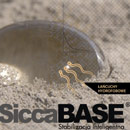Cooking for individuals with specific health needs can sometimes feel daunting. However, it can also be an exciting opportunity to explore innovative recipe modifications that cater to various dietary restrictions. Whether it's gluten intolerance, lactose sensitivity, or a need for low-sodium meals, understanding how to adapt recipes can lead to delicious outcomes that everyone can enjoy.
Every person's dietary requirements are unique, and making dietary adjustments is often necessary to create meals that are both nutritious and satisfying. This guide aims to provide practical strategies for adapting your favorite recipes without sacrificing flavor. By focusing on simple ingredient swaps and cooking techniques, you can transform traditional dishes into health-supportive alternatives that fit individual preferences.
As you embark on this culinary adventure, keep in mind the importance of being creative and flexible. With thoughtful planning and a willingness to experiment, you can make meal times more inclusive and enjoyable for everyone at the table. Let's explore how to tailor recipes to meet diverse health needs while still delivering a delightful dining experience.
Substituting Common Ingredients for Allergies
Making dietary adjustments for allergies often involves swapping out common ingredients with alternatives that maintain flavor and texture. Here are some practical substitutions that can enhance your recipes without compromising on taste.
Wheat Flour: Replace with almond flour or coconut flour for gluten-free options. Both can provide a delightful richness to baked goods.
Dairy Products: Choose plant-based milk, such as almond, soy, or oat milk, instead of regular milk. For yogurt, try coconut yogurt or almond-based alternatives that replicate creaminess.
Eggs: Utilize flaxseed meal or chia seeds mixed with water as a binding agent. This mixture works well in pancakes and muffins, offering moisture and texture similar to eggs.
Soy Sauce: Opt for coconut aminos as a soy-free alternative that delivers a similar umami flavor, making it suitable for various dishes.
Nut-Based Ingredients: If someone is allergic to nuts, consider using seeds like sunflower or pumpkin seeds, which can provide crunch and flavor without the risk of nut allergies.
Honey: Substitute with maple syrup or agave nectar for those who are allergic to bee products. Both sweeteners can enhance your dish while catering to different dietary needs.
Implementing these substitutions allows for flexibility and creativity in the kitchen, ensuring that everyone can enjoy a meal tailored to their dietary restrictions. Always be mindful of cross-contamination and check labels to avoid allergens in store-bought alternatives.
Adjusting Nutritional Values for Specific Diets
When customizing recipes, adjusting nutritional values is crucial to meet various health needs. Different diets require specific macro and micronutrient ratios, necessitating thoughtful recipe modifications.
For those following low-carb diets, such as ketogenic, reducing sugars and starches while increasing healthy fats is essential. Switching from regular flour to almond or coconut flour can significantly impact carbohydrate content while enhancing nutritional value.
Vegetarian or vegan diets present unique challenges in terms of protein intake. Incorporating ingredients like lentils, chickpeas, or tofu can help achieve necessary protein levels without animal products. Additionally, consider using plant-based protein powders in smoothies and baked goods for a nutritional boost.
For individuals with lactose intolerance or those avoiding dairy, there are various alternatives available. Options like almond, soy, or oat milk provide similar textures and flavors when substituted in recipes. Fortified versions can help maintain calcium and vitamin D intake.
Those on gluten-free diets will need to modify traditional recipes to eliminate gluten sources. Using a blend of gluten-free flours and binding agents can maintain texture while ensuring that the dish remains enjoyable without compromising dietary restrictions.
Maintaining a balanced approach to nutrition while accommodating dietary adjustments fosters a healthier lifestyle. By exploring various alternatives, individuals can create recipes that align with their specific dietary needs. For more ideas and inspiration, visit https://doyoubake.com/.
Ensuring Flavor and Texture Remain Intact
When making dietary adjustments, it's crucial to ensure that flavor and texture aren't compromised. Personalized baking often involves substituting ingredients, but this doesn't have to result in a bland or unappealing dish.
One way to maintain the original flavor profile is through selective seasoning. Spices and herbs can enhance the taste, making it more vibrant. Experimenting with different combinations can lead to satisfying results that align with health needs.
Texture can be trickier to achieve, especially when replacing ingredients that contribute to moisture or structure. For instance, using applesauce or yogurt in place of eggs not only helps with moisture but can also add a pleasant tang. Additionally, selecting gluten-free flours like almond or oat flour can impart a unique texture to baked goods while ensuring dietary compliance.
Don't hesitate to incorporate ingredients that add crunch or creaminess. Nuts, seeds, or nutritional yeast can enhance the mouthfeel and flavor complexity of the final product. This approach keeps your customized recipes enjoyable and indulgent, catering to both taste and dietary restrictions.












